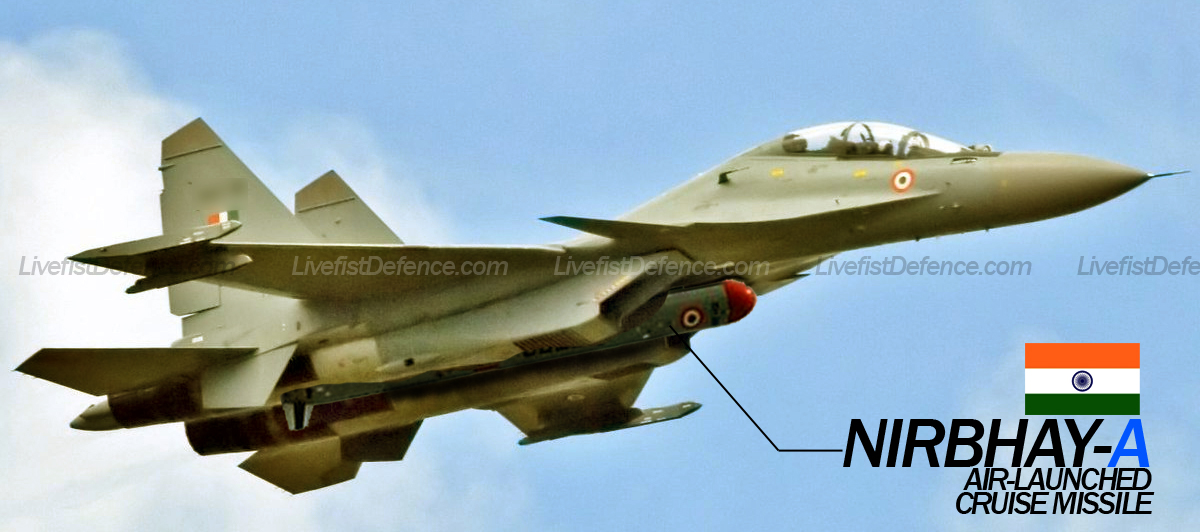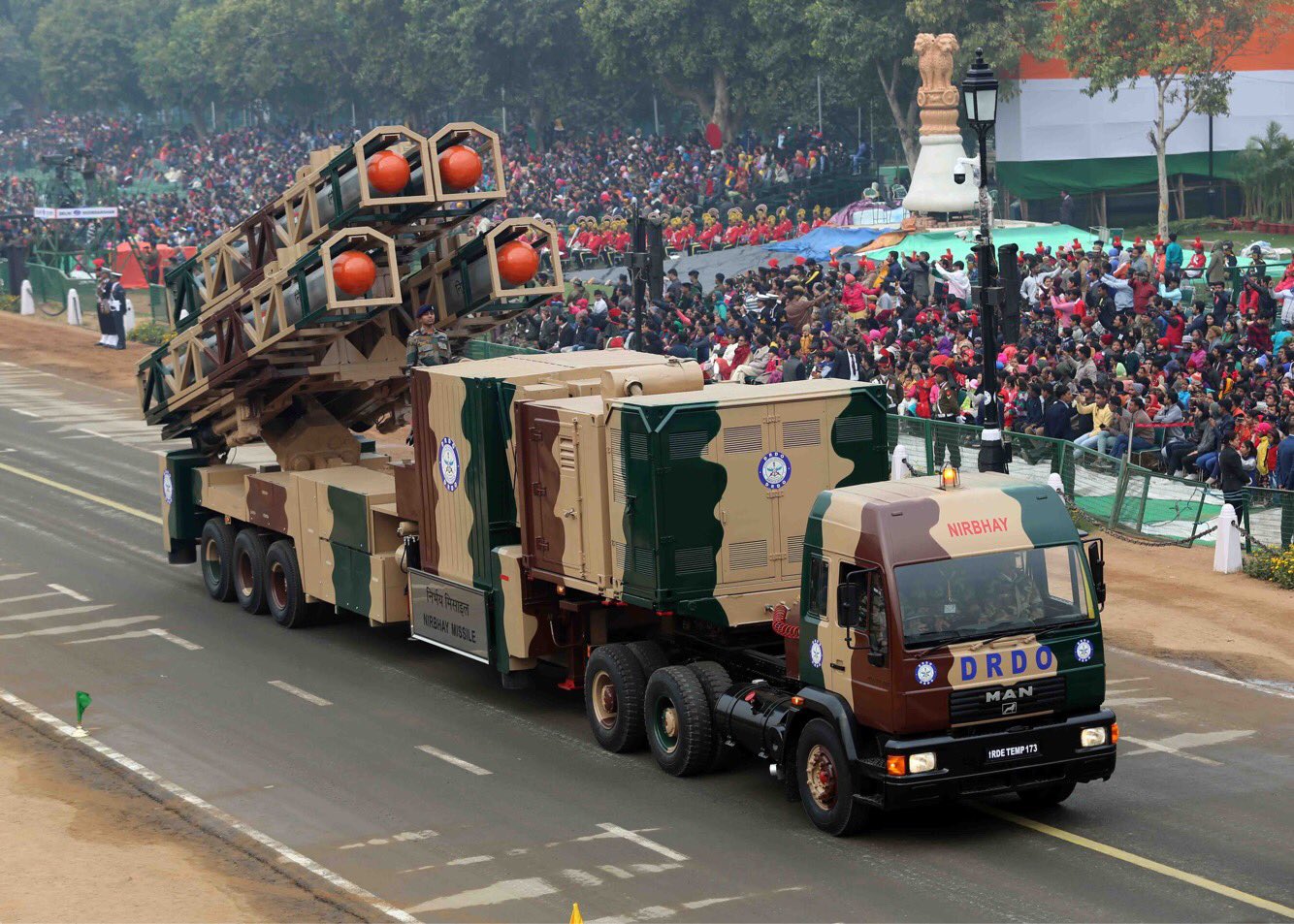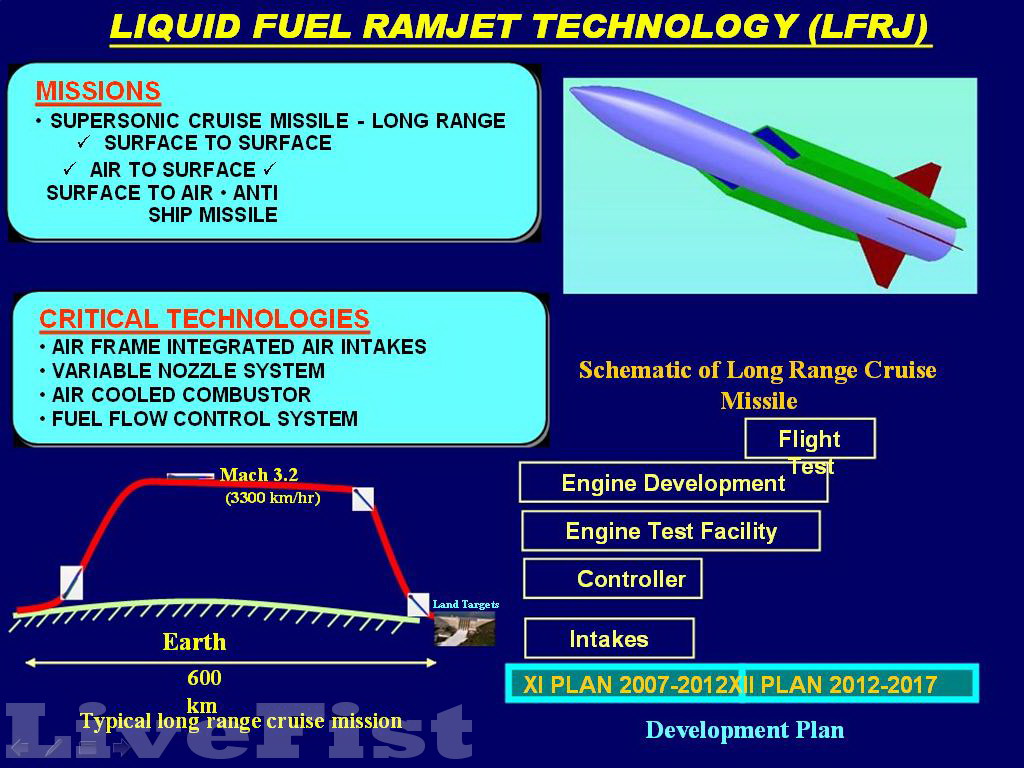
Decks have been cleared for improved air and ship-launched versions of India’s 1,000 km range Nirbhay cruise missile, twin efforts revealed first here on Livefist in 2018. In a statement today following the decision, the Indian MoD said the long range land attack cruise missile (LRLACM) would ‘add to the fire power of three services‘ and that the ‘addition of LRLACM with firing range of 1000 km to the existing arsenal will bolster the attack capabilities of the Navy and the Air Force.’
While the land-launched Nirbhay system has been in launch test since 2013, Livefist first revealed plans for the improved air-launched derivative in this detailed report. The DRDO and Indian Navy have also been conducting range extension studies to spawn a 1,500 km range LRLACM for ships. Today’s decision makes a so far exploratory effort official — the Nirbhay (and its derivatives) will be a tri-services missile system, and one of the most crucial in India’s arsenal.
The LRLACM will be a vastly improved version of the Nirbhay, not just in terms of range, but also possibly its propulsion scheme. More on that in a moment.

In a statement following today’s decision approving the development project, the Defence Research & Development Organisation said, “Presently, lead in projects have developed, demonstrated and matured critical cruise missile technologies such as aerodynamic configuration, vertical launch using solid booster, thrust vector control system, booster separation, in-flight wing deployment, in-flight engine start and long range way-point navigation system. Seeker development and testing by DRDO laboratories are demonstrated and is at a high level of readiness. Thus, it is important to take up the proposed development of fully indigenous long range land attack cruise missile that greatly enhances the operational capability of services.”

The baseline version of the Nirbhay will be a strategic forces element with India’s land forces, with the last development test conducted in April 2019. A planned series of tests will commence this winter before the truck based launch regiments are inducted into service.

While the Nirbhay is still powered by the Russian NPO Saturn 36MT engine, India’s indigenous Manik mini turbofan has also made progress, though it remains unclear when a Manik-powered Nirbhay will be tested. Delays in test infrastructure at the Gas Turbine Research Establishment (GTRE) have stalled progress, though there are indications now of forward movement. Approval to the naval and air-launched versions of the Nirbhay will no doubt provide a boost too.

India’s long range cruise missile efforts date back at least a decade, with Livefist revealing in 2010 plans by the DRDO to develop one. At the time, the plan was for a fully supersonic missile powered by liquid fuel ramjet technology as detailed in the slide you see above from an official DRDO presentation.
With the BrahMos cruise missile, now operational with all three armed forces, taking care supersonic duties — including an active range expansion exercise that will put it out to 900 km or more — the LRLACM will be developed as a clear Nirbhay derivative, but with additional propulsion elements. As Livefist has reported here, the LRLACM could involve a three-stage power system: the Nirbhay booster to put the missile in the air, the NPO Saturn 36MT/Manik turbofan to power the cruise missile through its 1,000-km cruise phase and, finally, a ramjet engine that will push the weapon into supersonic endgame towards its target.
The Indian MoD and DRDO haven’t talked timelines yet. Livefist will follow up.
from Livefist https://ift.tt/3ivc6yP
via Live Defense
No comments: